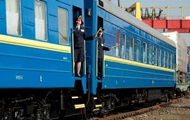The recurring clashes in the Middle East have well-known roots: the absence of a political settlement of the Palestinian question, the rise of religious radicalism, the irredentism of terrorist movements in the north (Hezbollah in Lebanon) and in the south (Hamas and Islamic Jihad in Gaza), the active pursuit of colonization … One might think that the violence that is currently enlivening it is just a new episode in a conflict that has lasted too long. However, this one is different and potentially more serious.
Three elements of context help to explain it: the disappearance of the Palestinian question from the political agenda in the Arab countries and in Israel; the political vacancy on the Israeli side, with Mr. Netanyahu taking care of the day-to-day business, and on the Palestinian side, with Mr. Abbas having canceled the May 22 elections – while the Arab countries are losing interest in the issue and Joe Biden has yet to appointed ambassador to Jerusalem; finally, a calendar conducive to demonstrations of force: exit from confinement, end of Ramadan, celebration of the reunification of Jerusalem (May 10).
Because once again, it all started from Jerusalem, with a double spark. On the one hand, the threat of evicting Palestinians from formerly Jewish homes. The Supreme Court was to rule on Monday 10, it postponed its decision… On the other hand, temporary restrictions on access to the Esplanade of the mosques, and violent clashes severely repressed.
Three validated convictions
Two different dynamics then intervened. Hamas and the Palestinian Islamic Jihad, claiming to “support the believers in the al-Aqsa mosque and the families of Sheikh Jarrah”, seized the opportunity to launch a large-scale offensive against the Israeli populations. However, hundreds of blind rockets have saturated the Iron Dome defense system. In response, as in 2008 and 2014, Israel launched operations in Gaza to weaken Hamas and Islamic Jihad. At the same time, serious riots accompanied by lynchings broke out in the “mixed” towns of Israel, notably in Lod.
The crisis immediately validates three convictions. First, even when put under wraps, the Palestinian question is not extinguished and Jerusalem is still a key to it – and the only symbol on which all Palestinians find themselves. Then, Hamas mocks the populations it claims to govern: it uses “human shields” to dissuade the Israelis from hitting the buildings in which it is hiding, and does not hesitate to shoot the Ashkelon power station … which serves the Gaza Strip. Finally, any American president claiming to be disinterested in the Middle East will find himself compelled to get involved.
But it also presents three worrying differences from those that preceded it. The first: the military capabilities present in Gaza are now almost as dangerous as those of Hezbollah in Lebanon and pose the risk of a pincer grip by Israel. The second: with Arab abstention, the Palestinian question is becoming more and more Islamized, Iran and Turkey appearing as the protectors of Gaza. The third: the Israeli model of coexistence of a Jewish majority with a rather well integrated Arab minority (20%) is weakened. It is serious for the country. It remains to be hoped that these events will serve as an electric shock and push the political class to consider solutions for the region that are likely to ease tensions in the long term.
– .


